Adding video to online courses offers a multitude of benefits for both instructors and students. Here are some of the most prominent advantages:
Enhanced Engagement:
Visual and auditory stimuli in videos can keep students more engaged compared to text-only content.
Motion and visuals can illustrate concepts more effectively, holding the student’s attention longer.
Personal Connection:
Videos, especially those with the instructor speaking, can help establish a personal connection with students. It makes the learning experience feel more “human” and less isolated.
Non-verbal cues like facial expressions and tone of voice can convey enthusiasm and empathy.
Simplified Complex Ideas:
Demonstrations, animations, and visual aids can break down intricate concepts, making them easier to understand.
Video can present step-by-step processes or simulations that can be paused and reviewed as often as needed.
Flexibility and Convenience:
Students can watch videos at their own pace, rewinding and reviewing sections as necessary.
Mobile compatibility means learners can access video content from anywhere at any time.
Consistent Content Delivery:
Every student receives the same content, reducing variations in instruction that can occur in live lectures.
Video ensures consistent delivery across different sessions or semesters.
Support for Diverse Learning Styles:
Videos cater to auditory and visual learners. They can be paired with text and other resources to create a multifaceted learning environment.
Enhanced Retention:
Combining visuals with auditory information can lead to better retention and understanding of the material.
Visual storytelling or real-life examples in videos can make content memorable.
Table of content
- Part 1: How to embed multimedia content in Canvas LMS
- Part 2: An affordable & simple Canvas LMS alternative: OnlineExamMaker
- Part 3: How to create an interactive course with OnlineExamMaker
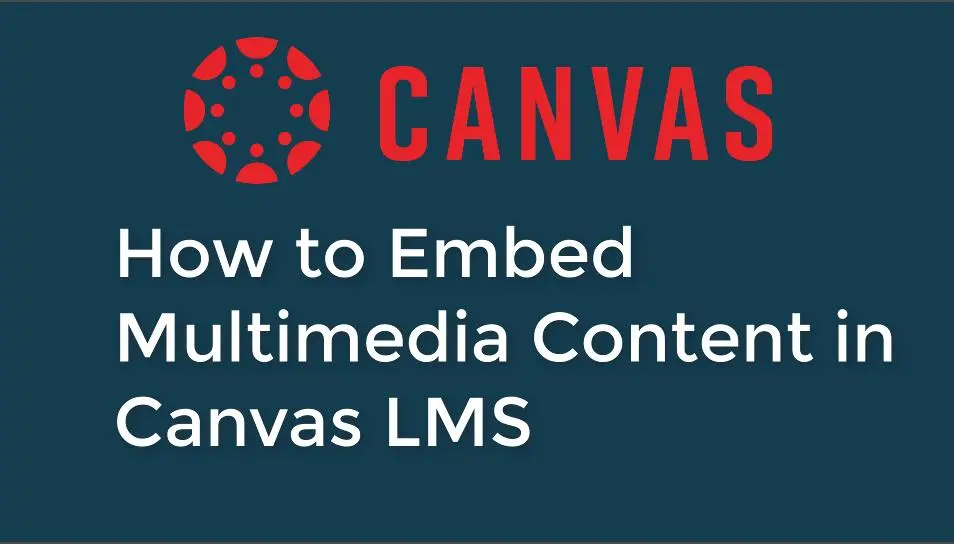
Canvas LMS (Learning Management System) allows instructors to create engaging content by embedding multimedia such as videos, audio, and other interactive elements directly into course materials, assignments, announcements, discussions, and quizzes.
Here are the steps and methods to embed multimedia content in Canvas LMS.
1. Using the Rich Content Editor:

The Rich Content Editor (RCE) is available in many areas of Canvas like Assignments, Announcements, Discussions, Pages, etc.
a. Navigate to the area where you’d like to add content.
b. Click on the “Embed” icon (it looks like a cloud or < > symbols, depending on your version).
c. Paste the embed code of the multimedia content you wish to add. (You typically get this code from video platforms like YouTube, Vimeo, etc.)
d. Click “OK” or “Submit”.
2. Embedding a Video from YouTube:
a. On the YouTube video page, click “Share” below the video.
b. Choose “Embed”.
c. Copy the provided embed code.
d. In Canvas, access the Rich Content Editor where you want the video.
e. Click the “Embed” icon and paste the code.
3. Embedding Audio or Video Files from Your Computer:
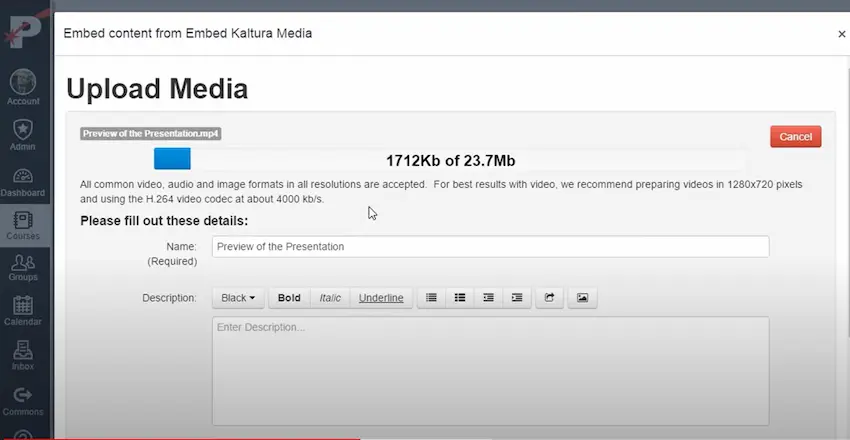
Canvas allows you to upload video and audio directly.
a. In the Rich Content Editor, click on the “Upload/Record Media” icon.
b. You can choose to upload an existing file or record new media.
c. Follow the prompts to complete the upload or recording.
4. Embedding from Third-Party Apps:
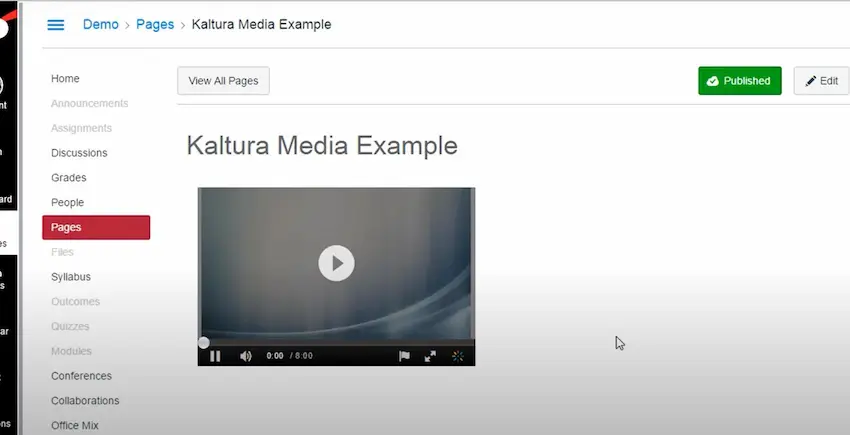
Canvas often integrates with third-party tools like Khan Academy, Quizlet, Padlet, and more. Depending on your institution’s setup, these tools may be available directly from the Rich Content Editor.
a. In the RCE, look for the specific icon or link representing the third-party tool.
b. Follow the prompts or instructions to embed content from that tool.
5. Using External Tools or LTI (Learning Tools Interoperability):
Some multimedia platforms and tools may be integrated with Canvas via LTI. For example, platforms like Kaltura or Panopto might be used by institutions for video hosting. These platforms typically have their own “Embed” button within Canvas modules, assignments, and discussions.
6. Embedding Interactive Content (like Quizzes) from Platforms like H5P:
a. Create your interactive content on the platform (e.g., H5P).
b. Export or get the embed code.
c. In Canvas, open the Rich Content Editor where you want the interactive content.
d. Click the “Embed” icon and paste the code.
7. Linking Instead of Embedding:
If for some reason you cannot embed the content directly, you can always add a direct link to the multimedia content. While not embedded, it still provides students easy access.
Tips:
• Always check the preview of the content to make sure it displays correctly.
• Respect copyright laws and guidelines. Ensure you have the right to use and share multimedia content in your course.
• Optimize your multimedia files for web use to ensure fast loading times for students.
An affordable & simple Canvas LMS alternative: OnlineExamMaker
OnlineExamMaker offers a comprehensive suite of tools for creating, delivering, and tracking learning content. Organizations can easily create interactive courses using a variety of media, such as videos, quizzes, and assessments. The intuitive interface allows for seamless course creation, ensuring that content is engaging and tailored to the specific needs of learners.
Product Highlights
Interactive Course Creation: Create engaging courses with multimedia elements like videos, quizzes, and assessments.
Social Learning Features: Foster collaboration and knowledge sharing through discussions and project-based learning.
Personalized Learning Paths: Tailor learning paths based on individual learner needs and goals.
Gamification Elements: Incorporate gamification elements like badges and leaderboards to drive engagement and motivation.
Create Your Next Quiz/Exam with OnlineExamMaker
How to create an interactive course with OnlineExamMaker
Step 1: Go to OnlineExamMaker.com
Step 2: Create a New Course
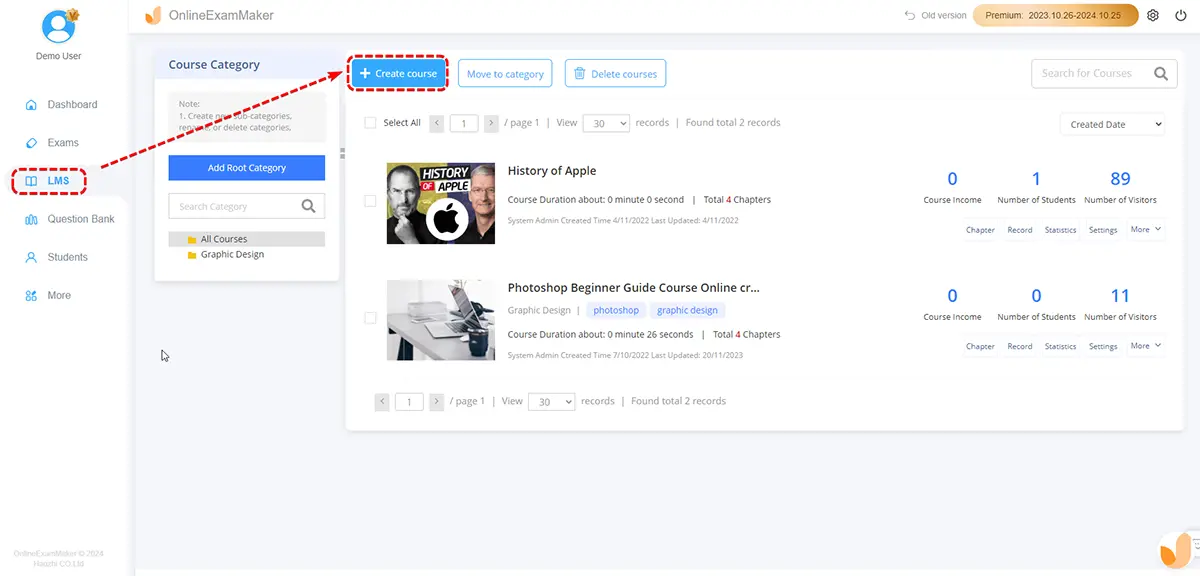
Click”Create course” button, then edit the course information.
Step 3: Add Video to the Course

Upload video courseware to OnlineExamMaker LMS, then add the video to the course.
Step 4: Publish the Course
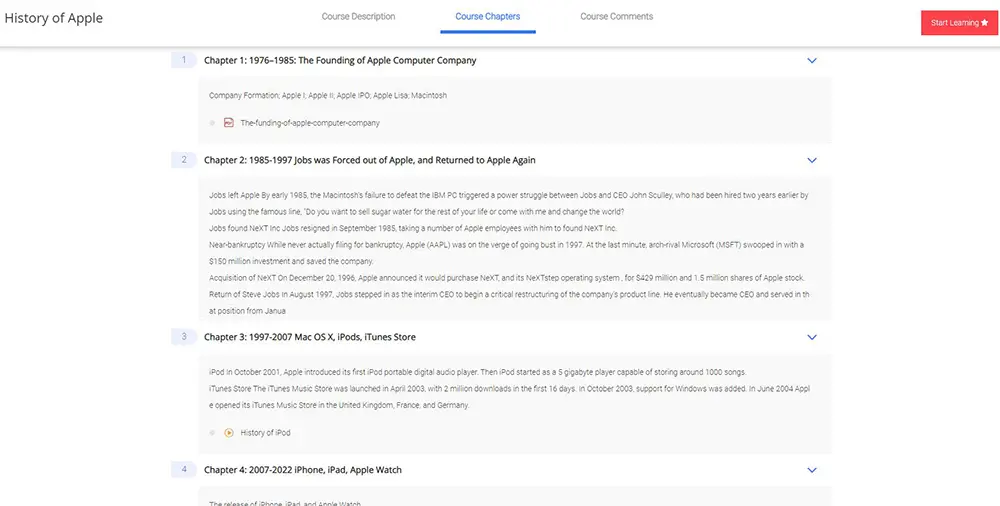
Once you’re satisfied with the content and settings of your course, you can publish the course to make the course available.